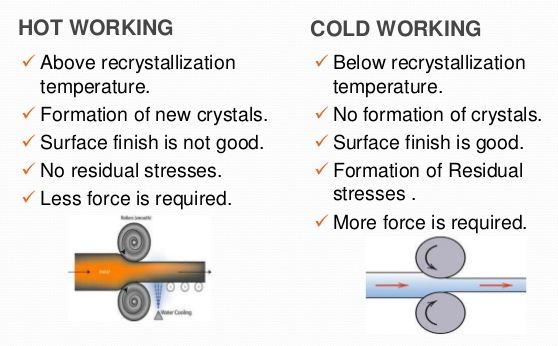Work-Hardening
The working of metals below their recrystallisation temperature is known as cold working. Most of the cold working processes are performed at room temperature. The cold working distorts the grain structure and does not provide an appreciable reduction in size. It requires much higher pressure than hot working. The extent to which a metal can be cold worked depends upon its ductility. The higher the ductility of the metal, the more it can be cold worked. It also increases tensile strength , yield strength and hardness of steel but lowers its ductility. The increase in hardness due to cold working is called work-hardening.
The cold working of metals is carried out below the recrystallisation temperature.

Hollow shaft
Muff Coupling / Sleeve Coupling is the simplest type of rigid coupling, consists of a hollow cylinder whose inner diameter is same as shaft. It is fitted over the ends of the two shafts by means of a gib head key. The power is transmitted from one shaft to the other shaft by means of a key and a sleeve or muff.
The sleeve or muff coupling is designed as a hollow shaft.

Absolute zero temperature
The temperature at which the volume of a gas becomes zero is called Absolute zero temperature.
Absolute zero is the lowest limit of the thermodynamic temperature scale, a state at which the enthalpy and entropy of a cooled ideal gas reach their minimum value, taken as zero kelvins.
At zero kelvin (minus 273 degrees Celsius) the particles stop moving and all disorder disappears. Thus, nothing can be colder than absolute zero on the Kelvin scale.
According to kinetic theory of gases, the absolute zero temperature is attained when kinetic energy of the molecules is zero.